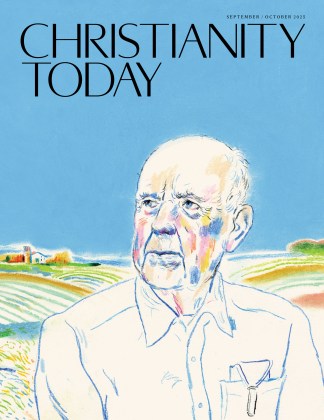 In a recent interview with Men’s Health, aging actress Raquel Welch criticized Internet porn for ruining men: “Do they know how to negotiate something that isn’t pre-fab and injected directly into their brain?” she asked. “Nobody remembers what it’s like to be left to form your own ideas about what’s erotic and sexual. We’re not allowed any individuality.”
In a recent interview with Men’s Health, aging actress Raquel Welch criticized Internet porn for ruining men: “Do they know how to negotiate something that isn’t pre-fab and injected directly into their brain?” she asked. “Nobody remembers what it’s like to be left to form your own ideas about what’s erotic and sexual. We’re not allowed any individuality.”
Welch’s interview attracted significant attention, mostly for her accusation that “we have equated happiness in life with as many orgasms as you can possibly pack in.” Some media coverage has offhandedly referenced Welch’s sex symbol status, while a few bloggers have directly pointed out the irony of her criticism. But the consensus is that she’s right: It’s hard to find a realistic and honest argument that ubiquitous porn has made for a healthier world.
I too think Welch is on to something. And not just about men and porn.
Among the mysterious gifts God gives his image bearers are the imagination and ability to develop sexual desire for people we love. We can form attraction we can’t explain, and to grow in that attraction as we grow in love and commitment. Somehow, though a thousand men may overlook me, my husband finds me beautiful.
Our image-saturated culture, with its rigid standards of beauty and predilection for plastic, does not allow for such variety. We are programmed to view one another through lenses we were never meant to wear, and in the process, we learn to despise ourselves.
From television, movies, magazines, book covers, billboards, buses, computers, and even our phones, these images parade before us—often without our conscious notice. Most of these images are laced with subtle or anything-but-subtle sexuality. And they’re almost all fake. Bodies are airbrushed, reworked, even assembled from parts of various people through Photoshop, a twist on Frankenstein’s horrifying monster—and we’re convinced they’re beautiful, even though we know they’re outrageous.
Yet such standards of beauty are so ingrained, most of us have to intentionally resist them. And many of us who are able to resist extremes still strive to bring our bodies closer to such standards without questioning why. As we do, we forsake our God-given capacity to form ideas about beauty and attractiveness within the context of loving relationships with our spouses.
What would you and I find sexy if we lived in a small, isolated community with no exposure to media? Our cultural ideals would be formed by the characteristics of the people we knew. And without constant exposure to processed images, we would be largely free to develop our own ideas of beauty within the context of relationships. Attraction would be defined relationally rather than imposed by outside forces. We would all believe we were surrounded by the hottest people on earth. And we would be right.
From boyhood, men are told what is attractive and conditioned to respond to certain images with sexual arousal. Because of cultural assumptions about their appetites and cultural permission to indulge them, they are bombarded with such images. They are not allowed to develop their own ideas of beauty.
Perhaps because women are considered less sexual, less visually stimulated, and less given to indulge our lusts, our sexual desires are not so heavily manipulated. However, we are not free to imagine what is beautiful about ourselves.
This image-driven culture—and our appetite for it—is robbing us of the ability to enjoy what God has created and pronounced good. Our bodies are blighted by the effects of sin and sin’s cruel sister, decay. Even so, we are all beautiful examples of God’s creative work. Our amazing bodies point to him. How tragic that we allow ourselves to be shamed in the shadow of something he never created.
Shame keeps us in a place whose door was opened at the beginning of history, in the Garden of Eden. Immediately after Adam and Eve shared the forbidden fruit, “their eyes were opened, and they suddenly felt shame at their nakedness. So they sewed fig leaves together to cover themselves” (Genesis 3:7). Bodies were the first place Adam and Eve directed their shame, and they hid themselves from one another and from God himself. How ironic that the capstone of God’s creation should become a portion of his work we so despise and want so desperately to reinvent.
The antidote is in the transformation that comes through the renewing of our minds (Romans 12:2). With the Holy Spirit’s help, we can stop and consider where our own ideals are coming from. Married people can practice the cognitive discipline of refusing to compare their spouse with others. They can make their spouse the object of fantasies, training the mind to avoid attaching itself to others as objects of desire. Single people can find accountability partners, with whom they can be honest. They can surround themselves with people who aspire to the same level of integrity and who refuse to burden one another with unrealistic expectations perpetuated by false images.
Churches have responsibility to lead the way in challenging Christians to reject the world’s sexual manipulations. Leaders must continue to speak frankly about the porn crisis, challenging congregants to seek help. They must acknowledge that porn is not just a men’s issue, but is increasingly snaring women. They must also acknowledge that the problem with destructive sexual images in our culture lies far beyond the boundaries of porn.
Church leaders, please overcome your squeamishness and challenge people to see themselves as the pinnacle of God’s creation, their bodies as expressions of his creativity. Encourage small groups of married and single adults to discuss sex as openly as the youth group does. Invite counselors specializing in sexual addiction and body-image issues to speak to your church. And commit to provide support and accountability, rather than condemnation, for people who struggle.
Inherent in our cultural programming is a deep rejection of God’s creative abilities. We despise his artistry when we trade the pinnacle of his creative work for a grotesque alteration that doesn’t exist in reality. When we buy into the world’s standards of beauty and strive—consciously or unconsciously—to make ourselves into something he did not create, we not only hurt ourselves; we spit on the skill of the very artist who made us. This is true not only when we settle for pornography, but also when we allow “benign” images from fashion magazines, billboards, and other media to form our ideas of what makes us and others beautiful. After all, beauty should be in the eye of the beholder.
Amy Simpson is editor of Christianity Today’s Gifted for Leadership, a freelance writer, and author of numerous resources for Christian ministry, including Into the Word: How to Get the Most from Your Bible (NavPress) and a forthcoming book on ministry to people with mental illness. You can find her at www.AmySimpsonOnline.com and on Twitter @aresimpson.
Films by and about Iranians have provided some of the highlights of the Toronto International Film Festival in recent years. Offside, Persepolis, When Buddha Collapsed From Shame, and Two Legged Horse (set in Afghanistan but directed by Iranian Hana Makhmalbaf) have each offered glimpses into cultures that few Americans know much about but which, in light of recent post-election protests, continue to garner the world’s attention.
My Tehran for Sale is listed as an Australian/Iranian picture, since director Granaz Moussavi moved to Australia with her family in the late 1990s. Its focus on the youth culture in urban areas reminded me of Persepolis, as did its attempts to portray the internal strife when love of one’s culture and country comes into conflict with those who would proscribe how such emotions must be expressed in order to be legitimate.
I think My Tehran for Sale would make an excellent companion film with Nahid Persson’s The Queen and I in that Persson’s film comes from a generation that participated in the Iranian revolution and must grapple with how and why that participation led to ends so very different from what they imagined. By contrast, in My Tehran for Sale we are beginning to hear voices from Iran of those who inherited the revolution, who were born into a society shaped by fundamentalism. If Persson’s film is the better of the two (and I think it is) that may be because there is a deeper level of self reflection in it. I think Moussavi’s generation is in that place where it must first document its grievances. That’s not a bad thing, necessarily, but it does tend to result in films that are a bit one-note. (And I confess the repeated assertions at the festival of Moussavi being the first to break some of this ground struck me as a bit self-aggrandizing given the richness of Iranian literature, memoir, and film in recent years.)
 Spoken-word poet and YouTube sensation Jefferson Bethke’s newest video, “Behind the Pen,” hasn’t quite gained the momentum of January’s breakout “Why I Hate Religion But Love Jesus,” but at over 50,000 views in two weeks, it’s definitely not slacking. From The New York Times and Nightline to the Gospel Coalition, there’s been no shortage of opinions, both positive and negative, on Bethke’s messages. His “Sexual Healing” poem and subsequent “Sex, Marriage and Fairytales” laid Bethke’s views on gender out on the table.
Spoken-word poet and YouTube sensation Jefferson Bethke’s newest video, “Behind the Pen,” hasn’t quite gained the momentum of January’s breakout “Why I Hate Religion But Love Jesus,” but at over 50,000 views in two weeks, it’s definitely not slacking. From The New York Times and Nightline to the Gospel Coalition, there’s been no shortage of opinions, both positive and negative, on Bethke’s messages. His “Sexual Healing” poem and subsequent “Sex, Marriage and Fairytales” laid Bethke’s views on gender out on the table.
https://www.youtube.com/watch?v=IlJFvxad1_A
The 22-year-old Washington native and Mars Hill member spoke with Her.meneutics guest writer Kate Roberts about his views on sexuality, parenting, and gender roles.
In “Sexual Healing,” you address the repercussions of premarital sex. What do 20-somethings in the church get wrong about sex?
I recently read an article called “Why Young Christians Aren’t Waiting Anymore,” and the stats were that 88 percent of non-Christians adults have had sex, while Christians were 80 percent. There is only an 8 percent difference, which is really staggering when you think about it. What Christians are missing out on, what everyone is missing out on, is the depth of sex, the spiritual layers God created it to have, rather than just two bodies slamming together. Sex is suppose to be a picture of emotional, mental, physical and spiritual nakedness—seeing the other person just how they are and still saying, “I accept you, I want you, I want to become one with you.” And you continually [have sex] to renew that covenant to [say], “We’re one,” which is ultimately a picture of what we are with Christ.
How do your views on masculinity inform this poem and your broader teachings about sex?
There are a few distortions that men fall into with sex, and the first is, “It’s all about me.” Pornography has trained almost every guy in America to think that sex is for [men] completely: All about me, all about my desires, and the girl is simply an object. That’s a disease today.
In order to define your masculinity, you have to see how Jesus defined masculinity because he was a man, he gave himself up fully for others’ needs. That is how true masculinity should inform sexuality, ultimately in a marriage, being the first one to reveal your nakedness spiritually, emotionally, and mentally to your wife; wanting to serve rather than take from her. You pursue, you lay down your life, you elevate the woman above yourself. Masculinity is not putting yourself above anyone, it’s putting yourself under
everyone and lifting everyone else up.
At one point in the poem you state, “Take a rape victim for example … ruin her life,” drawing an analogy between sex outside of marriage and rape. Could you elaborate on that?
That line got a little misinterpreted. Some people thought I was comparing premarital sex to rape, which I wasn’t necessarily doing. I was saying that sex is deeper than just physical, because any other type of violent crime, even though it will leave some emotional stress, only leaves physical marks. Yet most rape victims would say [the damage] goes way beyond that. I’ve read testimonies where [rape victims] just continue to shower because they feel so dirty and contaminated. All I was saying is that there is something happening on a spiritual level when sex happens, and the grotesque damage of rape shows that it goes to that deep level.
At a conference where I did that poem live, there was a 16-year-old girl who broke down because she had been date raped at age 15 and never realized the healing and transformation that Jesus could bring. “I’m trying to clean my body when it’s the soul and the spirit Jesus is after,” she said.
Later you bring yourself into the poem, saying that if there’s one thing you learned from your dad, it’s “Leave the mom, ditch the baby.” What are fathers’ roles in teaching sexuality?
I see them teaching it horribly. Dads sometimes think they have to play the “manly card.” It’s terrible when the mom is the one calling the son or daughter to purity, and the dad is like, “Whatever, go get busy.” There’s a correlation between fatherlessness and the deep insecurity of this generation, which plays itself out in sex—that’s my opinion. A lot of times when I talk to people on a personal level, [they] say they continually pursue sex because they are ridiculously insecure because Dad never told them they were loved. If our dads aren’t around or if our parents don’t teach us in a healthy biblical way, then MTV or our neighbor or porn is going to.
How do you define biblical masculinity and biblical gender roles more broadly?
That’s a big question. I might just have to write a book on that one, or point to books. I would say proper biblical role for genders—I am completely complementarian. I believe God created the genders 100 percent equal, but God created us with different roles, and to go outside of that is to go outside of Scripture, because ultimately gender roles are a shadow of who God is, especially with us. From a basic, biblical stance, I would say biblical masculinity says elevate everyone else above yourself. Proper femininity is one called to respond—it’s not about shutting up and submitting, it’s about the wife being elevated above the man and the wife flourishing just like the church flourishes.
if you want proper gender roles, I point to Jesus and the church. So if you want to know what I think proper femininity is, what is the church’s role? And if you want to know what proper masculinity is, what is Jesus’ role?
I was among the skeptical when it was announced that Michael Haneke’s The White Ribbon took the Palme d’Or at this year’s Cannes Film Festival. Cynics whispered that the upset pick had as much to do with the jury being led by Haneke’s friend and sometime collaborator Isabelle Huppert as it did with the film’s preeminence.
 “Okay, before you go out, what do you do if you get pulled over?” The proper response? “Keep your hands on the steering wheel, look straight ahead and answer, ‘Yes, sir’ or ‘No, sir.’ Don’t give them any lip.” This was the gist of the conversation my close friend’s mother routinely had with her then teenage son when he took the car to hang out with his friends. It wasn’t a matter of if he’d be pulled over, but a matter of when and how often. Rather than being guilty of a DWI, he’d be guilty of DWB, or “Driving While Black.” Being pulled over (or hassled in others ways), often for no apparent reason, is a recurring experience for many African-Americans who are minding their own business. But it’s not just African-Americans.
“Okay, before you go out, what do you do if you get pulled over?” The proper response? “Keep your hands on the steering wheel, look straight ahead and answer, ‘Yes, sir’ or ‘No, sir.’ Don’t give them any lip.” This was the gist of the conversation my close friend’s mother routinely had with her then teenage son when he took the car to hang out with his friends. It wasn’t a matter of if he’d be pulled over, but a matter of when and how often. Rather than being guilty of a DWI, he’d be guilty of DWB, or “Driving While Black.” Being pulled over (or hassled in others ways), often for no apparent reason, is a recurring experience for many African-Americans who are minding their own business. But it’s not just African-Americans.
My friend Eve Nunez and her husband Joseph told me that law-enforcement officials in Arizona routinely hassle Latinos (both documented and undocumented). One friend of theirs was chased down the highway in his SUV and actually called them while it was happening. He was assumed to be an undocumented resident because of the color of his skin and the unjust SB 1070 legislation. Another citizen was harassed by law enforcement over his immigration status while at a restaurant, humiliated in full view of the patrons—again because of the color of his skin.
Another friend, a lawyer who formerly worked for a city prosecutor’s office, told me about some of her experiences in law school. For example, while riding with friends through a predominantly white, affluent suburb, all the African-American law students in the car would duck out of view. Why? The police in this particular suburb are notorious for pulling over darker-skinned people for no apparent reason. That’s why the local magistrate routinely throws out suspicious citations by these police officers. It’s not an experience that those in the majority culture often have or can even identify with, but one that minorities, especially those of darker skin, frequently go through.
Such stories of overt discrimination wake us up from the slumber of assuming racism is over.
It really seems as if minorities and those in the majority culture live in two different worlds. That’s what we all need to understand. The Trayvon Martin/George Zimmerman tragedy has forcefully brought racial tensions, and the realities that many minorities face, to the fore.
What has been the white American evangelical church’s stance?
Historically, as the Civil Rights era emerged, many Christian colleges and churches were more concerned with the length of men’s hair than with the abuse and oppression of African-Americans and other minorities. In a 2005 article in Books & Culture, Ron Sider cites research which demonstrates that, “White evangelicals are the most likely people to object to neighbors of another race.” And after careful and considerable research in their seminal work, Divided by Faith: Evangelical Religion And The Problem of Race in America, (a resource Sider also cites), Michael O. Emerson and Christian Smith soberly conclude that, “… white evangelicalism likely does more to perpetuate the racialized society than to reduce it.” No wonder Ed Gilbreath and his publishers titled his eye-opening book, Reconciliation Blues: A Black Evangelical’s Inside View of White Christianity.
Is there hope for our nation and for our evangelical churches? I think so. Things are starting to change, albeit slowly (I’d argue) from the standpoint of many minorities. While some white evangelical leaders issue regrettable and hurtful remarks about Trayvon Martin and racial profiling, other prominent white evangelicals are speaking up and seeking ways to do their part in reconciling with their minority brothers and sisters.
As Chris Rice notes, “The way things are is not the way things have to be.”
And it’s not just pastors and church leaders who realize the truth of what Chris Rice has said. A growing number of students at Cedarville University, where I work, are starting to realize that we seemingly do live in two different worlds and that we need to understand and identify with one another if things are to change. That’s why a group of students and staff initiated a prayer vigil for the Trayvon Martin and George Zimmerman families on April 12th. Not only was it a prayer vigil, but it was a call to repentance and prayerful action. The event was sponsored by the Peace Project, an on campus service and social organization that seeks to foster and promote a God-centered attitude of multiculturalism, and the Diversity Student Program Team (staff). About 125 students, along with some faculty and staff, were present. I believe Dr. Jeff Cook’s words at the event capture well the posture Christians should take:
If I think all the social and racial issues were solved in the sixties, we’re not paying attention. The fact of the matter is that God’s concern for justice leaps out of every chapter of the Bible. God doesn’t play favorites. When Israel was on the receiving end of injustice, God acted. When they were the instigators of injustice, God acted …. As Christians, we call for justice for George Zimmerman. But not only justice for George, but for Trayvon also and all the other Trayvons that got up this morning to a world that is a little different than ours ….
The fact of the matter is, I am not suspicious for walking down the street in a gated community in a hoodie. But that’s not true of everybody. As followers of Jesus … as the body, we are deeply aware that in the body of Christ when one part hurts, we all hurt. That’s a normal functioning body … a dysfunctional body feels no pain when another part is hurting. When I see Trayvon as my son, as my brother, as my sibling, as a young man who was loved by his mother (and) father … who had a future like any seventeen-year-old kid, when I view him as that … (we) stand in unity as a family of God and grieve.
Second photo courtesy of Scott Huck/Cedarville University.
The White Ribbon is also a film about place. Set in a small German village just prior to the outbreak of World War I, its narrative winds through the village entwining several families, all with secrets. Expanding the breadth of his narrative turns out to be a good thing for Haneke, as it allows the audience’s uneasiness to build gradually throughout the film and find its culmination not so much in a single, climactic act of violence as in a final awareness of just how deeply entrenched is the malignancy of the human heart that leads to it.
Shot in luminous black and white and utilizing a brilliant ensemble cast, The White Ribbon struck me as less of a horror film and more of a literate, thoughtful, and serious examination of horrific ideas. (It reminded me in many ways of the work of Nathaniel Hawthorne, who shares with Haneke a concern for the way in which intolerant and absolutist societies can warp the human heart.) Some will no doubt find the ending a bit abrupt, especially if they are used to Hollywood movies delivering tidy thesis statements in the form of climactic, rhetorical speeches. I thought the point was clear enough.
 Last week Her.meneutics writer Sharon Hodde Miller critiqued aspects of evangelical author Dan Brennan’s take on friendship between men and women, noting that his approach failed to grapple with the reality of sin. Below is Brennan’s response.—The Editors
Last week Her.meneutics writer Sharon Hodde Miller critiqued aspects of evangelical author Dan Brennan’s take on friendship between men and women, noting that his approach failed to grapple with the reality of sin. Below is Brennan’s response.—The Editors
A heartfelt thank you for the opportunity to respond to Miller, who I agree with on several excellent points.
My heart goes out to singles and their alienation. I also agree with Miller about the objectification of women. And I affirm her warning that any friendship not come between the spousal friendship of husband and wife, the friendship of utmost importance.
Miller’s post stirred some visceral responses, some in agreement, some not. There was no consensus, however, on her framing of the issue. With all this impassioned discussion, it’s apparent that within the evangelical world the issue of cross-gendered friendships, although controversial, is emerging as an important one, one that I’ve given significant attention to through my book and other writings.
First things first: I wish Miller had addressed the elephant in the living room: Freud. The elephant doesn’t disappear simply because we quote Bible verses and think we have higher marital boundaries than our secular neighbors. What passes for a high view of marriage may actually keep us from facing our fears and loving one another (not just our spouses) as Christ loved us.
It’s hard for us evangelicals to confess we have been impacted by the pioneer of psychoanalysis. Freud’s theories, absorbed by pop culture, have put sex at the center of everything in the West—infiltrating evangelical views of relationships between men and women. Christian writers such as Elaine Storkey, James Olthuis, Jack Balswick, Sue Edwards, Lisa McMinn, Ruth Haley Barton, and Marva Dawn have noted Freud’s impact in their respective work.
Yes, we must grapple with the reality of sin in this world. Lust is one of the cardinal sins. We all know of pastors who have fallen into sexual sin, leading to church division, divorce, and emotional scars that last a lifetime. Getting emotionally entangled into inappropriate relationships where one spouse conceals an emotional-sexual connection can be just as devastating as physical adultery. This is another place where I share Sharon’s deep concern. Adultery destroys the vows of exclusive relationship in marital sexuality. Triangles, even if there is no sexual intercourse, are a violation of marital sexuality.
But we must also grapple with the reality of a pop-Freudian undercurrent within our churches that alters how we view relationships. We need to ask, Are we confusing a robust view of sin with a robust view of Freud? Maybe a robust view of sin confesses that we have blindly followed the one who posited frustrated sexual desire to lie at the heart of every relational encounter between men and women—libido lurking in all meaningful oneness.
What does it mean for us as men and women to flourish in relational oneness in God’s Story? Scot McKnight suggests in his book The Blue Parakeet, “Nothing in the Bible makes sense if one does not begin with the Garden of Eden as a life of oneness—human beings in union with God and in communion with the self, with one another, and with the world around them. Life is about oneness.” He adds that Pentecost is “all about the power to create oneness.”
Paul speaks of a oneness beyond marriage when he states there is neither male nor female but we are all in one Christ (Gal. 3:28). Jesus prays for oneness in John 17. Sharon did not address the numerous Bible passages calling for relational oneness beyond the married couple. Aren’t we called to wrestle with these passages as much as those concerning marital oneness?
Alienation is the term I use to describe the brokenness that prevents oneness between men and women both within and beyond marriage. Alienation between men and women has existed since Genesis 3 and manifests in many ways: sexism, suspicion, and sexual objectification. It may be present within an individual relationship, marriage, or community. Fear and shame always accompany alienation.
Betty DeBerg, in her book Ungodly Women, documents how late-19-century premillennalists considered women leaders a sign of the Last Days. Pastors objected to women’s desire to vote, fearing it was a sign of eschatological doom. In the evangelical tradition, women have had to overcome much opposition and sexism pushed by the underlying fear and shame perpetuated by alienation.
Healthy boundaries help men and women flourish as one flesh in marriage and in community. A covenantal view of marriage means that a man and woman belong to one another, and no one (same gender or cross gender friend) is to come between them. They share a distinctive oneness.
However, here’s the tricky, messy part. Readymade, formulaic boundaries for married men and women don’t get to the heart of what is wrong: the fear and shame that keep us from loving one another as Christ has loved us. Alienation shames us into believing we can’t deeply love our spouses while also deeply and chastely loving friends of the opposite sex.
if we claim to be brothers and sisters in Christ, these loves are a viable path from alienation to reconciliation between the sexes in this present world. Our personal communities may include friendship patterns that resemble close sibling relationships, build trust, and strengthen shared life together.
Freudian boundaries perpetuate sexism, suspicion, and sexual objectification, rather than patiently nurturing oneness between men and women. Friendship is a path out of alienation and its trappings—a robust path towards relational oneness. We must not confuse unhealthy triangles with healthy, close relationships with brothers and sisters in Christ.
The greatest way to guard one’s marriage is to intentionally nurture trust, transparency, commitment, and intimacy as a couple. But through that marital oneness, freedom can be navigated between the spouses to nurture relational oneness with our brothers and sisters in Christ. Some of these relationships may develop into deep friendships, in turn bearing witness of the unseen triune God to a fragmented, alienated, Freudian world (John 17).
Dan Brennan is the author of Sacred Unions Sacred Passions: Exploring the Mystery of Friendship Between Men & Women and is hosting a conference on this topic in Chicago this weekend.
Perhaps it isn’t fair to call movies like Syriana or Rendition horror films, but in their willingness to be explicit about the details of torture, they often play on the surface as horror films, at times being more disturbing for their proximity to real life than the increasingly cartoonish gorefests with roman numerals in the titles that seem to get released every other week and disappear just as quickly.
The Disappearance of Alice Creed has all the ingredients of a horror-porn exploitation film, but its genius lies in withholding enough information from us that while we think we know what we are watching, we aren’t entirely sure.
If horror is about giving expression to our deepest cultural fears (Frankenstein of science run amok, Dracula of xenophobic fears of miscegenation), The Disappearance of Alice Creed simultaneously brings to light and exploits our moral uncertainties about entertainment (is any message worth subjecting ourselves to some of the images we do?) and, especially, torture. Because the first response to squeamishness about torture is to demonize the object of torture, the film effectively forestalls that first move by not allowing us to know for certain who Alice is or what is motivating the men who kidnap her.
That is not to say the film is morally ambiguous. Rather than forcing us to eschew moral judgment in a wishy-washy postmodern way, it forces us first to contemplate the thing itself, absent context. Rather than taking someone who we know has done “x” and asking the question, “Does “x” deserve this?” the film shows what is done and forces us to ask, “Does anyone deserve this?” (Okay, really, “Is anything worth this?”)
If the film had actually gone all the way and really explored the implications of its premise, I would have been a lot more forgiving of its gratuitous excesses. Alas, it ultimately became more of a psychological thriller than a horror film, and as such invites the audience to enjoy too much the twists and turns to be taken seriously on any level other than exploitainment. Director J. Blakeson specifically mentioned admiring the Coen brothers for their ability to integrate dark humor into their films, but in spirit and flesh, Alice Creed reminded me much more of a Tarantino film than a Coen film.
Eddie Marsan will be familiar to some viewers coming off a star-making turn in Mike Leigh’s Happy-Go-Lucky, and Gemma Arterton somehow, miraculously manages to convey enough genuine terror to make you believe you are a watching a real person and not an actress who has read the last page of the script and knows she will be okay in the end.
There were some concerns raised in the Q&A about scenes played for laughs which I can’t really repeat without giving some major spoilers but which I was glad were raised by younger viewers tired of certain stereotypes. Want to know what I found most horrific and uncomfortable in the film? The number of times the words “I love you” were said and meant and the implications that has for what a society producing that film understands love to be.
OTHER RANDOM FESTIVAL NOTES:
–If Drew Barrymore’s directorial debut, Whip It, is not a hit, it won’t be for lack of trying. If it’s not the most heavily publicized film in Toronto at the moment, I don’t know what is. One can hardly pass a lamp post or wall space without seeing Ellen Page in roller derby gear staring back at one, and Barrymore was in the studio by the Scotiabank today working the publicity machine.
–Other publicity stunts included a downtown zombie walk featuring scores of young adults made up like zombies. I assumed this was in honor of George A. Romero’s Survival of the Dead, but I was late for a screening, so I didn’t ask. There was also a storefront full of snow to promote the new Kate Beckinsale film, Whiteout, which isn’t even playing at the festival (and shouldn’t be confused with Snowblind, which is…).
–I don’t know if it is because more directors are doing Q&As or because more films were scheduled, but late starts have been particularly bad this year.
–It is customary for the films to be introduced by a member of the festival staff who will name and thank the sponsors. I’m all for that; one has to pay the bills. I’m a bit puzzled by the increasing need of programmers to explain why they booked the film and to summarize the plot for the audience about to see it. For what it’s worth, the greatness of the film is usually in exact disproportion to the amount of time the programmer spends telling you how great it is.
–Cell phone usage has reached a tipping point, critical mass, or whatever catch phrase you want to use. Seriously, it used to be one might see one backlight from a texter the whole festival, now one sees two or three a screening. I would not be at all surprised to read about a fight breaking out at a theater eventually. Given the amount of money some people pay to attend such screenings and the degree of shamelessness the cell phone users have, it seems only a matter of time.
Guest blogger Kenneth R. Morefield, an English prof at Campbell University, is writing about the Toronto International Film Festival for CT Movies.








